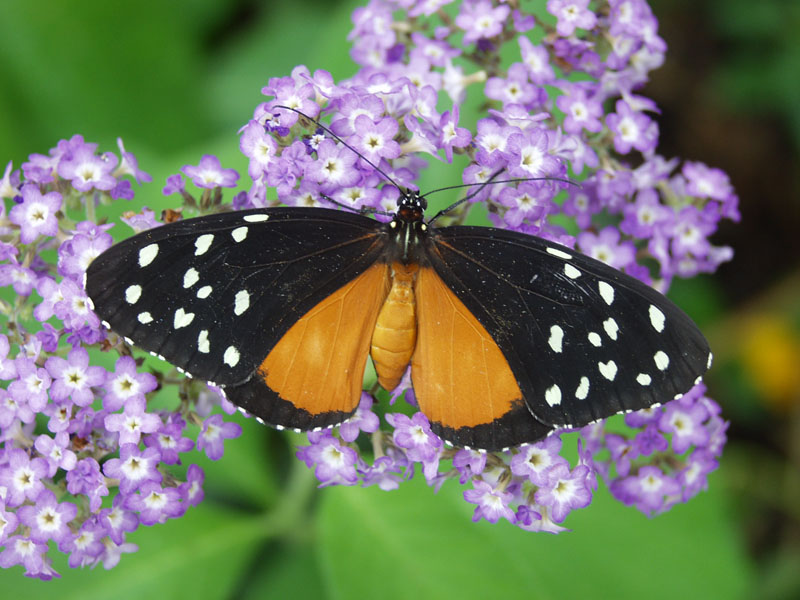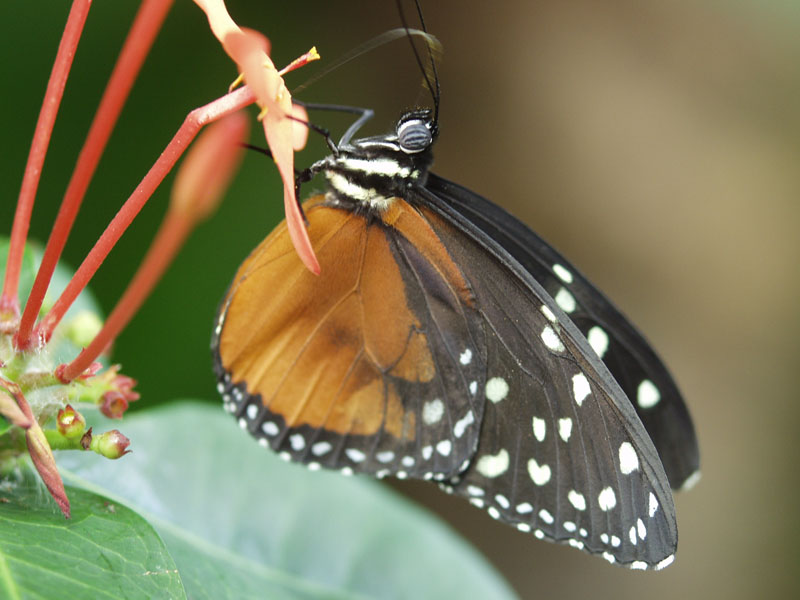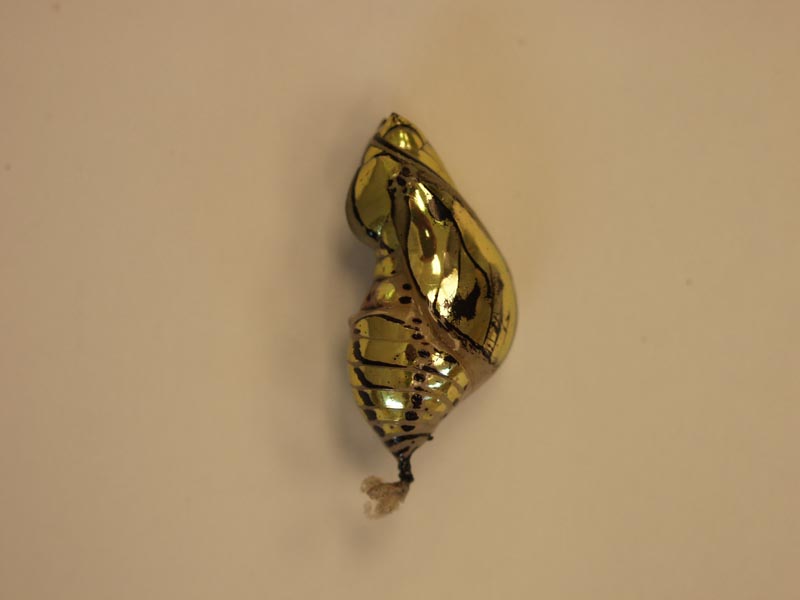


Adults visit a variety of nectar plants such as Epidendrum panniculatum, Eupatorium, Psychotria, and Hamelia.
The origin of the genus and species of Tithorea tarricina is currently unknown.
Adults are often observed in forested areas with moderate to high precipitation. They frequent the forest edge and areas immediately surrounding the area.
Males perch in trees waiting for females to pass through the area. From late morning until early afternoon, females lay their eggs on the host plants. The larvae feed on the host plant until they are ready to form their pupae.
There are multiple generations each year which makes it possible to find adults year round.
The pupa of the Cream-Spotted Tigerwing is a metallic color. The surface of the pupae is so reflective that it is possible to see your reflection in the surface. The advantage of a pupa with such a reflective surface is that it picks up the color from its surroundings, allowing it to blend in almost anywhere.